The Dia de los Muertos, or Day of the Dead, is observed in Mexico and parts of Latin America on Nov.1 and Nov.2 to honour loved ones who have died. Even though this holiday celebrates those who have passed, this is one of the liveliest times of the year.
Ornate altars (ofrenda) decorated with photographs, flowers, skulls, colourful paper and other items that were important to their deceased loved ones are created within family homes to celebrate and connect with those who are no longer with us. “What makes this celebration really unique is that depending on how many people are celebrating, the altar can get quite large and becomes a beautiful feast to celebrate your entire family,” shares the Botanist’s Executive Chef Hector Laguna, who was born in a small town in Hildago, Mexico and raised in Veracruz.
“Traditionally, there is a lot of purple, orange and white found in the El Día de Los Muertos, but since your offeranda should be in celebration of your loved ones, you can find items in their favourite colours on it as well,” says Laguna.
Here is how you can celebrate the Day of the Dead and the symbolism behind the traditions.
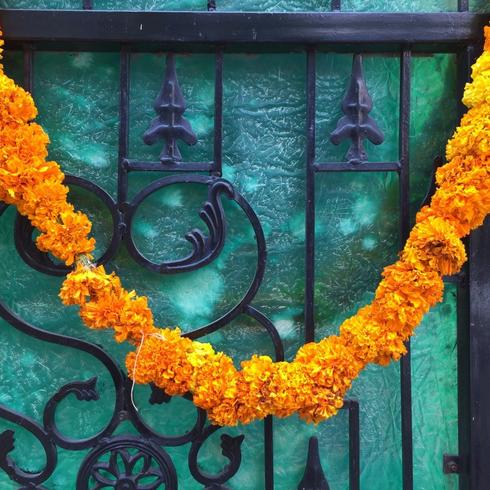
Marigolds
These fragrant orange flowers are often referred to as the “flowers of the dead” because it is believed that they help attract souls to the alter by leading them from their burial place to the family home. “The houses and cemeteries are filled with so many marigolds that the entire town smells like these aromatic flowers during the El Día de Los Muertos,” reminsces Laguna. Marigolds have also become an important part of Day of the Dead festivities because they turn what could be a somber day into a jovial celebration.
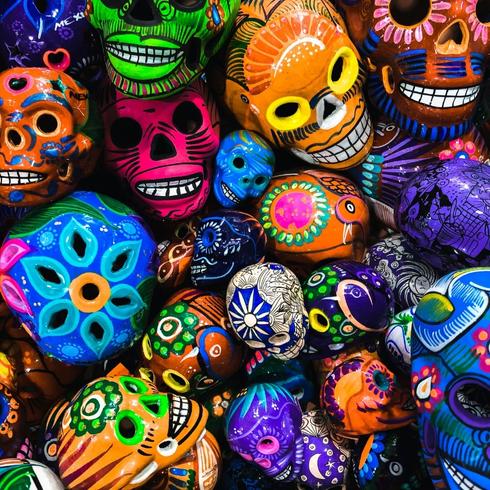
Skulls
The most recognizable symbol of El Dia de los Muertos celebrations is the colourfully painted skulls representing the people who have passed in the family’s alter. They are handmade out of a mixture of granulated sugar, meringue powder and water to symbolize the sweetness of life, which is then shaped into a skull and decorated with bright colours and ornate design.

Butterflies
The bright orange Monarch butterflies, which migrate to Mexico in the fall, are part of the Day of the Dead tradition as it is thought that the spirits of their relatives are coming to visit as these mystical insects carry their souls.
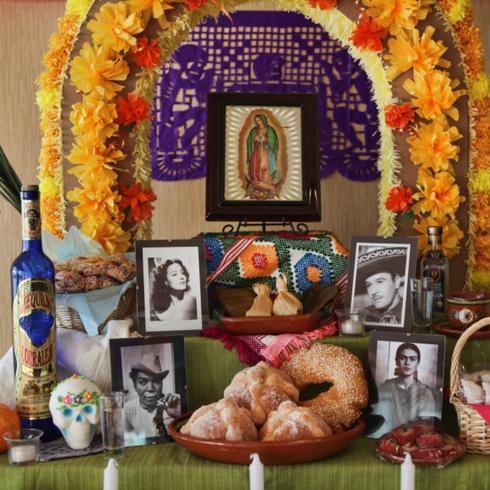
Photographs
In addition to the sugar skulls, you will find photographs of deceased loved ones on the altar when you celebrate the Day of the Dead as another way to draw their spirits close and remember those who passed.

Perforated Paper Decorations
Homes are decorated colourfully during the Day of the Dead festivities, including the intricately cut tissue paper designs known as papel picado. Made on thin paper with skeletons and other patterns cut out, these decorations represent the fragility of life as the holes let the souls pass through to visit their families.
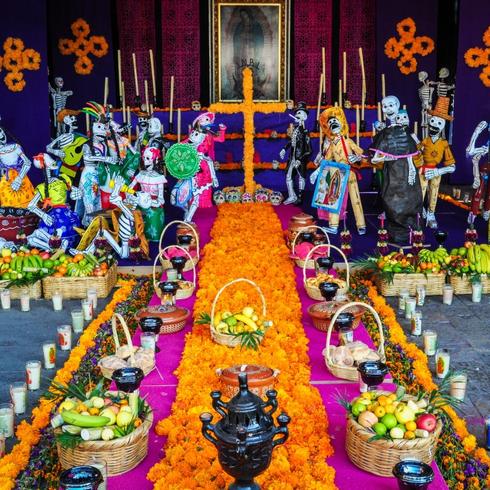
Skeletons
During Day of the Dead festivities, skeletons made of sugar, clay and chocolate are displayed as a reminder that death is always present. But these skeletons are not as scary as the ones found in Halloween decorations as they are painted in whimsical colours and are seen depicting some of the favourite activities of their deceased loved ones.

Bread of the Dead
A soft yet sweet bread called the bread of the dead (pan de muerto) is part of the traditions of the Day of the Dead. This bread is often decorated with a skull and crossbones and then dusted with sugar to symbolize the soil in the cemetery where the bodies of the relatives are buried.

Salt
Salt is also set out on the altar during El Día de Los Muertos celebrations in the shape of a cross to help purify and cleanse the spirit of souls. In some ofrendas, there is a cross made of ash to help deceased loved ones escape from Purgatory.

Water
It is believed that when the souls arrive on El Día de los Muertos, they are thirsty as well. tequila and water are placed on the alter as an offering. During the Day of the Dead, water can also signify the regeneration of life and death set out in a glass to refresh the spirit and a bowl with soap and a towel to clean the spirits.
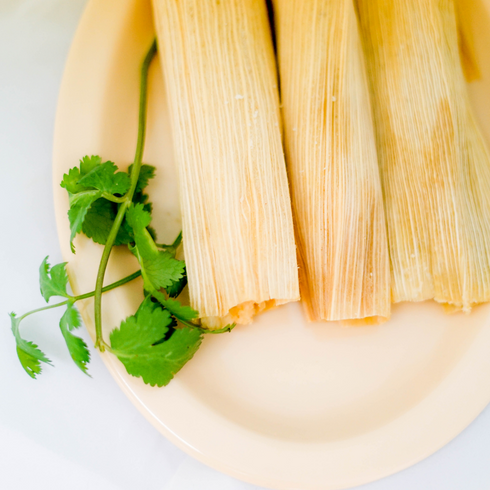
Family Feast
“There are two parts of the culinary traditions of the Day of the Dead,” explains Laguna. “First there are traditional dishes like tamales, but we also serve the foods that our loved ones liked when they were alive.” This feast comprised of their relatives who have passed their favourite foods is a way for the living to connect with the dead and help them on their journey. “What I love about this tradition is that everyone in the house would contribute dishes and cook together for the whole family to enjoy,” sayLaguna.
HGTV your inbox.
By clicking "SIGN UP” you agree to receive emails from HGTV and accept Corus' Terms of Use and Corus' Privacy Policy.




